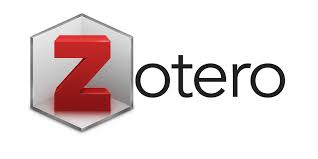Analisis Kemampuan Pemahaman Konsep Matematis pada Materi Segitiga dan Segiempat Ditinjau Berdasarkan Karakteristik Cara Berpikir
DOI:
https://doi.org/10.29240/ja.v4i2.4808Keywords:
Mathematical concepts, Quadrangular, Triangular, Characteristics, Way of thinkingAbstract
The research was done for analyze understand mathematical concepts of students on the material of triangular and quadrangular in terms of the characteristics of the student's way of thinking. This type of research is descriptive qualitative. The subjects in this study were students of class VII F and VII G of SMP Negeri 3 Muntilan. Subject selection procedure using purposive sampling. Data collection techniques use tests of mathematical concept comprehension ability, questionnaires of characteristics of ways of thinking, interviews, and documentation. The results showed that (1) the characteristics of concrete sequential thinking with Ability to understand high-category mathematical concepts can meet all indicators of understanding mathematical concepts, in the medium category it can meet 5 indicators and the low category only meet 3 indicators; (2) characteristics of abstract sequential thinking with the ability to understand mathematical concepts in the high category can meet 6 indicators, in the medium category it can only meet 5 indicators, and in the low category only meet 4 indicators; (3) the characteristics of concrete random thinking with the ability to understand mathematical concepts in the high category can meet 6 indicators, in the medium category it can only meet 5 indicators, and in the low category it can only meet 3 indicators; (4) characteristics of abstract random thinking with high ability to understand mathematical concepts can meet 6 indicators, in the medium category it can only meet 4 indicators and in the low category only meet 3 indicators.
Downloads
References
Amintoko, G. (2017). Model Pembelajaran Direct Instrution dalam Meningkatkan Pemahaman Konsep dan Hasil Belajar Definisi Limit bagi Mahasiswa. Supremum Journal of Matematika Education (SJME), 1(1), 7-12. Retrieved from https://journal.unsika.ac.id/index.php/supremum/article/view/549
Aningsih & Asih, T. S. N. (2017). Analisis kemampuan pemahaman konsep matematika ditinjau dari rasa ingin tahu siswa pada model concept attainment. Unnes Journal of Mathematics Education Research, 6(2), 217-224. Retrieved from https://journal.unnes.ac.id/sju/index.php/ujmer/article/view/20600
Arikunto, S. (2010). Prosedur penelitian: Suatu pendekatan praktek. Jakarta: Rineka Cipta.
DePorter, B. & M. Hernacki. (2013). Quantum Learning: Membiasakan belajar nyaman dan menyenangkan. Bandung: Kaifa.
Dick, W. & Carey, L. (2005). The Sistematic Design of Instrution. New York: Harper Collins College Publisher.
Gregorc, A. (1982). An Adult’s Guide to Style. Maynard, MA: Gabriel Systems.
Hasratuddin. (2015). Mengapa Harus Belajar Matematika? Medan: Perdana Publishing.
OECD, PISA 2018. (2018). PISA 2018 insights and interpretations. Retrieved from https://www.oecd.org/pisa/PISA%202018%20Insights%20and%20Interpret%20ations%20FINAL%20PDF.pdf
Rismawati, M., & Hutagaol, A. S. R. (2018). Analisis kemampuan pemahaman matematis siswa smp pada materi bentuk aljabar. Mosharafa: Jurnal Pendidikan Matematika, 7(2), 251-262. Retrieved from https://jurnal.stkippersada.ac.id/jurnal/index.php/JPDP/article/view/17
Sugiyono. (2019). Metode Penelitian Kuantitatif, Kualitatif, dan R&D. Bandung: Alfabeta.
TIMSS. (2015). Mathematics-Fourth Grade TIMSS 2015 International Mathematics Achievement, IEA TIMSS & PIRLS International Study Center : Boston Collage, Retrieved from http://timss2015.org/timss2015/mathematics/student-achievement/
Waluyo, E. & Nuraini. (2021). Analisis kesulitan belajar matematika siswa materi bangun datar sekolah menengah pertama. Jurnal Program Studi Pendidikan Matematika AKSIOMA, 10(2), 1273-1283. Retrieved from https://ojs.fkip.ummetro.ac.id/index.php/matematika/article/view/3586
Downloads
Additional Files
Published
Issue
Section
Citation Check
License
Authors who publish with ARITHMETIC: Academic Journal of Math agree to the following terms:
- Authors retain copyright and grant the journal right of first publication with the work simultaneously licensed under a Creative Commons Attribution-NonCommercial-ShareAlike 4.0 International License (CC BY-NC-SA 4.0) that allows others to share the work with an acknowledgment of the work's authorship and initial publication in this journal.
- Authors are able to enter into separate, additional contractual arrangements for the non-exclusive distribution of the journal's published version of the work (e.g., post it to an institutional repository or publish it in a book), with an acknowledgment of its initial publication in this journal.
- Authors are permitted and encouraged to post their work online (e.g., in institutional repositories or on their website) prior to and during the submission process, as it can lead to productive exchanges, as well as earlier and greater citation of published work (See The Effect of Open Access).







